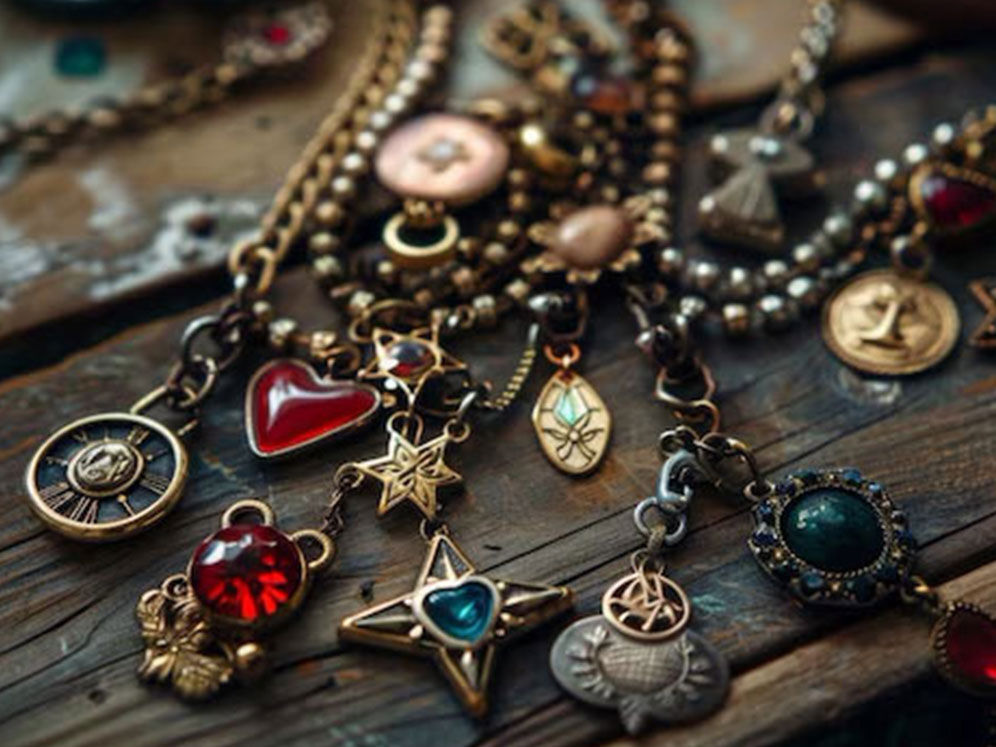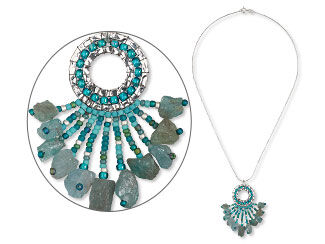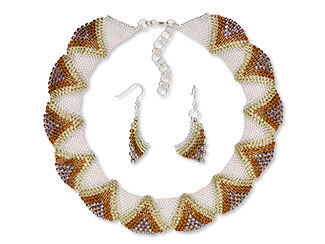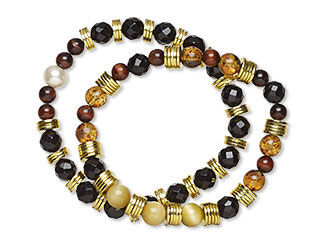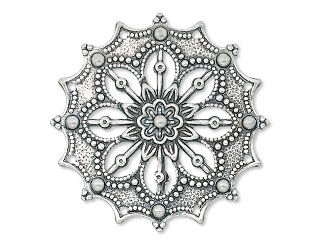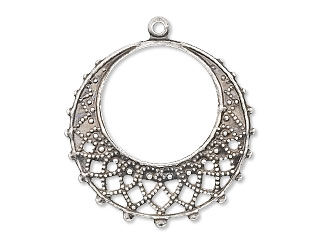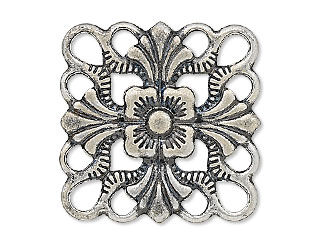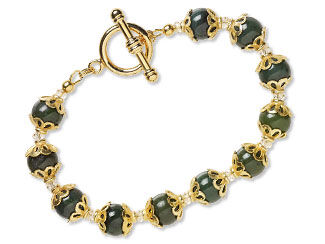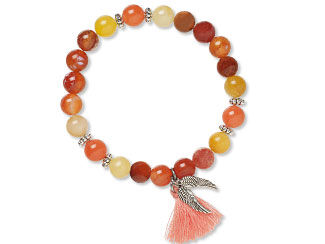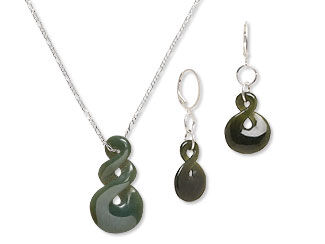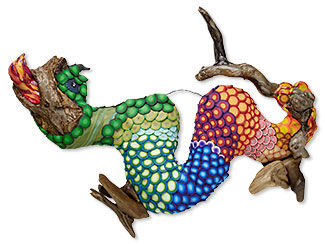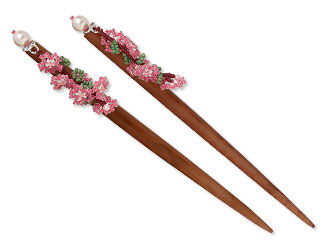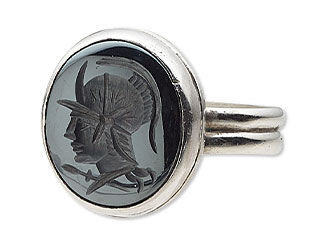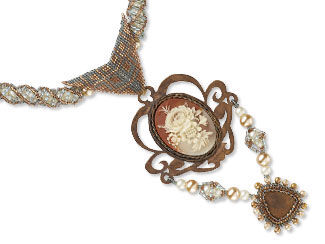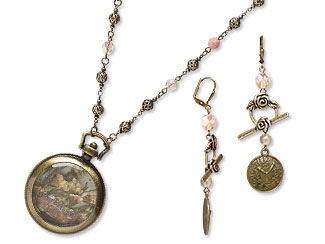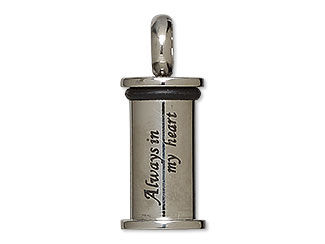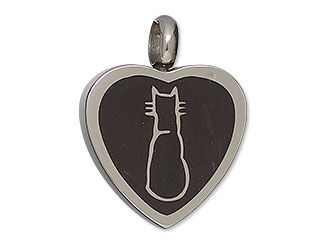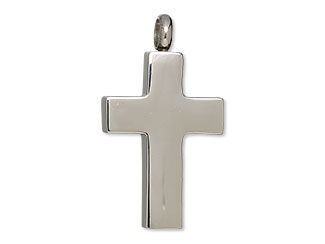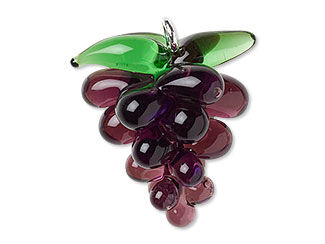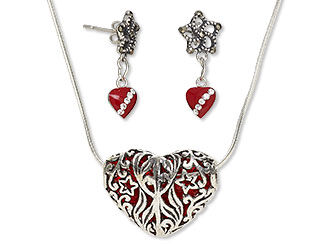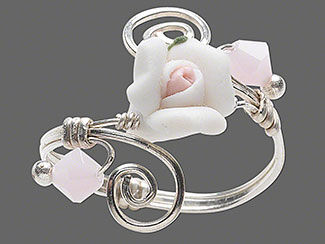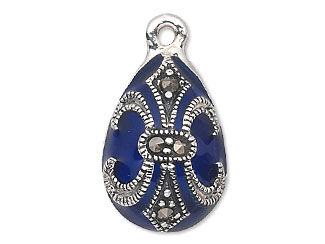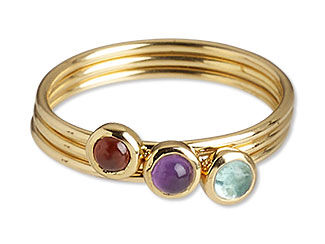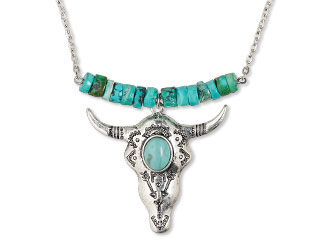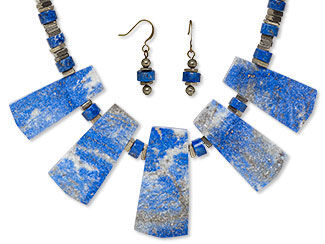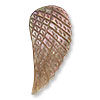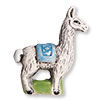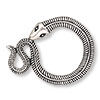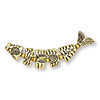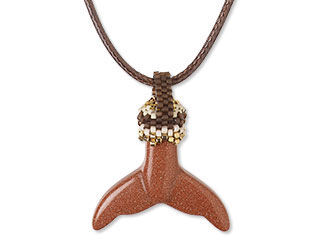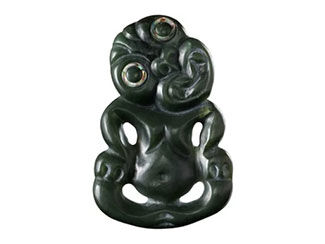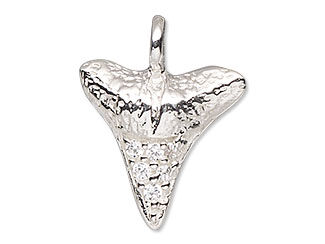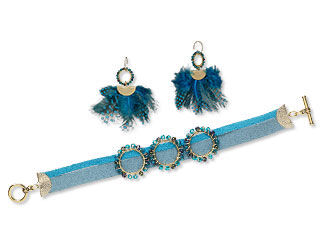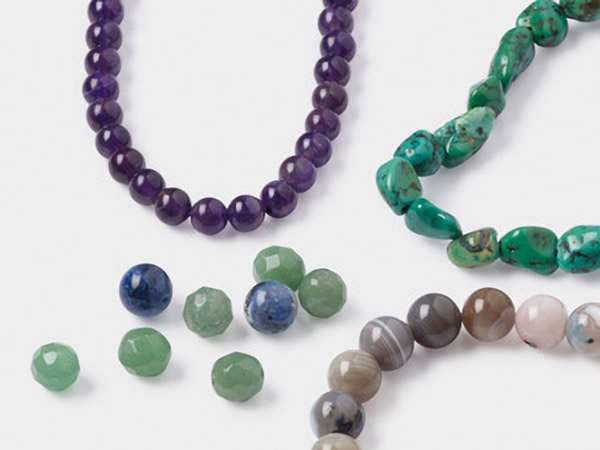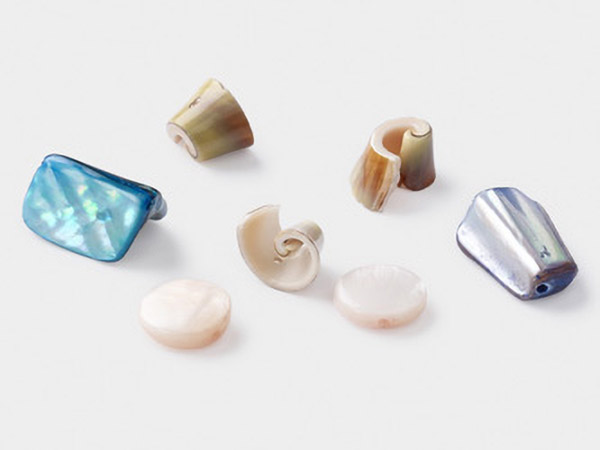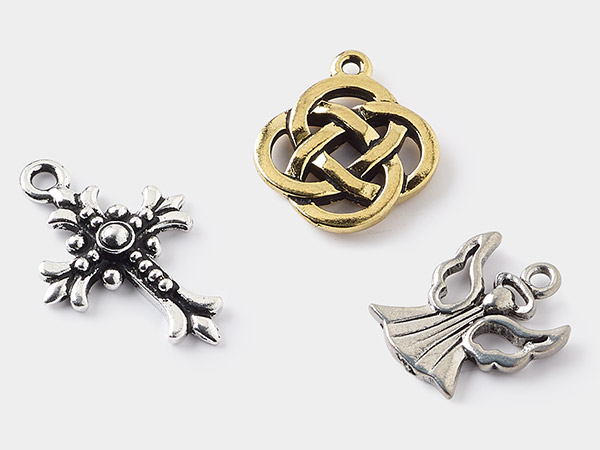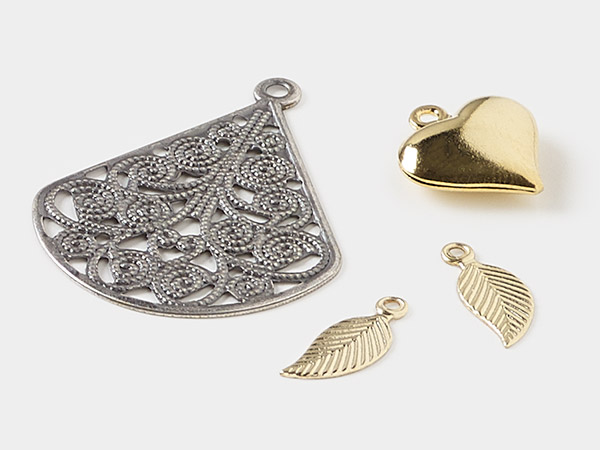Symbols in Jewelry from Every Continent
Jewelry has long been a powerful symbol across cultures, representing everything from wealth and status to spirituality, love and personal identity. In this article, we explore the cultural significance of jewelry—what wearing jewelry symbolizes—and how those symbols persist across time and distance to influence jewelry design all over the world.
Sub Saharan Africa
Meaning permeates every aspect of jewelry design in Sub-Saharan Africa, from color, shape and size to materials, body placement and pattern orientation. For instance, among the Zulu, colors often represent contradictory pairs, such as love and heartache or wealth and poverty, with white being the only color without a negative counterpart.
| Zulu | Color | Meaning |
|---|---|---|
| Pink | Wealth & Poverty | |
| Red | Love & Heartache or Anger | |
| Blue | Faithfulness & Hostility | |
| Yellow | Abundance & Thirst | |
| White | Purity, Spiritual Love | |
| Black | Marriage & Death | |
| Green | Contentment & Discord |
In Maasai culture, beads convey messages of marital status, age, social rank and personal virtues. For the Akan people of Ghana, intricate gold jewelry symbolizes power and status.
The Tuareg use cross amulets for spiritual protection against evil spirits. Colonialism also left its mark on African jewelry, with West Africa influenced by European styles and East Africa incorporating elements from Arabia, Persia and India.
Northern Africa
Jewelry in Northern Africa has been influenced by centuries of trade with Europe and Asia, as well as by Islamic styles. Silver is the preferred metal of the region, with jewelry featuring intricate techniques and delicate, complex designs.
| Northern Africa | Symbol | Meaning |
|---|---|---|
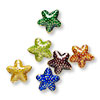 |
Stars & Sunbursts | Guidance, Protection, Hope, Energy |
 |
Birds | Freedom, Transcendence |
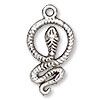 |
Snakes | Fertility, Guardianship |
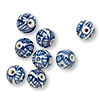 |
Geometric Patterns | Protection, Spirituality |
Egypt’s iconic design aesthetic is recognized worldwide, largely due to the profound impact of King Tut’s tomb discovery in the 1920s. For a deep dive into Egyptian symbols and design inspiration, explore Egyptian Jewelry Revisited.
India
Symbolism is deeply woven into Indian jewelry, with each piece carrying cultural and spiritual significance. The mangalsutra, a sacred necklace traditionally made of black beads and gold, is worn by married women as a symbol of marital commitment and protection against negativity. The maang tikka, an ornamental forehead pendant often adorned with pearls or gemstones, is believed to balance energy and offer protection, as it rests on the agya chakra, or "third eye." Bangles, worn in stacks on the wrists, signify social status, good fortune and family heritage—gold bangles are considered auspicious, while glass bangles are often worn during weddings for prosperity.
| India | Symbol | Meaning |
|---|---|---|
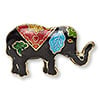 |
Elephant | Strength, Good Luck, Health, Happiness |
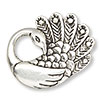 |
Peacocks | Beauty, Grace, Pride |
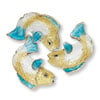 |
Fish | Rebirth, Fertility, Abundance |
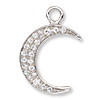 |
Crescent Moon | Serenity, Self-Control |
China
From as early as the Neolithic period, the Chinese revered jade for its durability, luster and almost ethereal quality, symbolizing purity, strength and spiritual connection.
By the Ming (1368–1644 A.D.) and Qing (1644–1912 A.D.) dynasties, jewelry became even more elaborate, with brightly colored enamels, imported gemstones and extravagant headpieces adorned with pearls, jade, coral and gold.
Traditional motifs like dragons symbolized strength and imperial power, while phoenixes represented grace and renewal, often worn together to signify harmony between masculine and feminine energies.
| China | Symbol | Meaning |
|---|---|---|
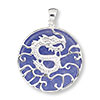 |
Dragon | Good Fortune, Strength, Power |
 |
Phoenix | Rebirth, Renewal, Immortality, Grace |
 |
Yin and Yang | Balance, Harmony |
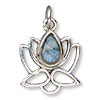 |
Lotus Flower | Purity, Spirituality, Peace, Enlightenment |
To learn more about Chinese symbolism, explore the article “Chinese New Year and the Story of the Zodiac.”
To learn more about the meaning of jade, read “The Unlocked Mysteries of Jade.”
Japan
One of the most iconic forms of Japanese jewelry is kanzashi, intricate hair ornaments traditionally worn by women, particularly geisha and brides. Kanzashi can be made from gold, silver, tortoiseshell, lacquer, silk flowers and more, with each design holding cultural significance. Seasonal motifs, such as plum blossoms for winter or wisteria for spring, align the wearer with nature’s cycles, while certain styles—such as the long, dangling bira-bira kanzashi—make a playful jingling sound. During the Edo period, elaborate kanzashi styles became status symbols, as skilled artisans had developed sophisticated metalwork techniques. Today, a kanzashi remains a cherished accessory in traditional Japanese attire, especially for formal occasions like tea ceremonies and weddings, blending historical elegance with contemporary fashion.
To learn more about Japanese jewelry traditions, explore “Reiki Jewelry: Balance Your Body and Mind.”
Explore the concept that combines Japanese minimalism with Scandinavian functionality in "Japandi Trend"
Middle East
Middle Eastern and North African jewelry share many symbolic motifs, including the Hamsa hand, the eye and the crescent moon. However, while North African jewelry is predominantly crafted from silver, gold is the preferred metal in the Middle East. Middle Eastern jewelry is often ornate and luxurious, featuring intricate designs—shaped by Islamic prohibitions against depicting people and animals—and adorned with precious stones. Gold is also a powerful symbol of wealth and status. Each country and culture within the Middle East has its own unique traditions, from Islamic calligraphy featuring Quranic verses to the Jewish Star of David and the rich Christian iconography found in certain regions. This diversity reflects the Middle East’s deep historical significance as a cultural and artistic center of the ancient world.
| Middle East | Symbol | Meaning |
|---|---|---|
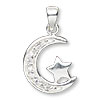 |
Crescent Moon and Star | Islam, Protection, Piety, Transformation |
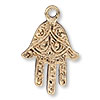 |
Hamsa Hand (Hand of Fatima) | Protection against the Evil Eye |
 |
Eye, including the Eye of Horus | Protection, used on amulets |
Ancient Greece and Rome
The Ancient Greeks crafted intricate gold wreaths, serpentine designs and jewelry featuring gods and nature, reflecting their artistic traditions. Precious stones such as garnet, carnelian, sardonyx, chalcedony, emerald and pearls adorned their pieces, each often associated with divine or symbolic meaning.
The Ancient Romans expanded upon Greek and Egyptian influences, incorporating materials and styles from across their vast trade networks. Signet rings, symbolizing power and authority, were widely used for sealing documents, while cameos and intaglios featured mythological figures and historical events carved into gemstones and shells.
| Ancient Rome | Symbol | Meaning |
|---|---|---|
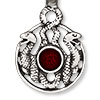 |
Snake | Healing, Rebirth, Immortality |
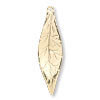 |
Laurel Wreath | Victory, Honor, Immortality |
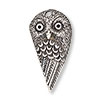 |
Owl | Wisdom, Intelligence |
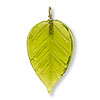 |
Leaves | Vitality, Growth |
Victorian England
The Victorian era saw a surge in symbolic jewelry, influenced by sentimentality, mourning customs and advances in mass production. Mourning jewelry, often crafted from jet or featuring woven hair, served as a tangible memory of lost loved ones. Lockets and brooches carried hidden compartments for portraits or keepsakes, while snake motifs, inspired by Queen Victoria’s engagement ring, symbolized eternal love.
A modern interpretation of the Victorian mourning jewelry might include container pendants, intended for ashes or other miniature keepsakes.
Russia
Medieval Russian jewelry was rich in symbolism, evolving with cultural influences and changing societal values. In the 9th century, silver itself was a sign of wealth, with heavy bracelets and torcs reflecting strength and status. Byzantine motifs like starbursts and grape clusters symbolized divine light and abundance, while Scandinavian curving lines in the 10th century introduced heart and rosette designs, evoking love and nature.
By the 11th century, hardship led to jewelry being melted down, though intricate techniques like granulation persisted, and the "Carpet style" emerged, covering surfaces with dense decoration. The 12th century saw Christianity’s influence, with gold filigree, cloisonné enamel and niello adding sacred meaning.
By the 13th century, knotwork and fleur-de-lis appeared alongside embossed animal and daily life scenes, turning jewelry into not just adornment, but storytelling art.
The Russian wedding ring features three interlocking bands, often in yellow, white and rose gold, symbolizing the past, present and future. Dating back to the ancient Slavs, it represents love, fidelity and friendship. Some also see it as a connection between self, others and the divine.
| Russia | Symbol | Meaning |
|---|---|---|
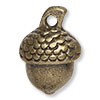 |
Oak Leaves & Acorns | Strength, Resilience |
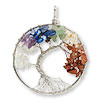 |
Tree of Life | Growth, Cycle of Life, Interconnectedness |
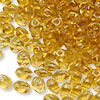 |
Honey | Prosperity |
 |
Bear (modern) | Military and Political Power |
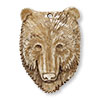 |
Bear (ancient Siberian) | Protection, Meditation between Earth and Heaven |
North America
Among Indigenous peoples of North America, jewelry symbolized social status, spiritual beliefs and tribal identity, often marking important life events such as marriage or leadership roles. Materials like shells, stones and bones were traditionally crafted into intricate pieces, while European contact introduced new elements—Spanish silversmithing and trade beads—that Native artisans incorporated into their evolving designs.
Turquoise, highly valued across many tribes, was more than a decorative stone—it symbolized protection, healing and a deep connection to the sky and water. Other materials, such as coral, jet and shell, carried regional and ceremonial significance, each adding layers of meaning to a piece. Bead patterns often told stories, passing down history and cultural identity through carefully arranged designs.
| Native American | Symbol | Meaning |
|---|---|---|
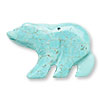 |
Bear | Courage, Power, Strength |
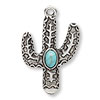 |
Cactus | Endurance, Protection |
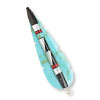 |
Feathers | Trust, Honor, Freedom |
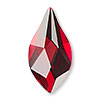 |
Fire | Renewal, Purification |
 |
Naja | Amulet for Protection |
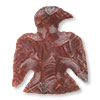 |
Thunderbird | Power, Warning |
To learn more about Native American jewelry, read “Native American Jewelry After the 19th Century” and “The Dream Catcher.”
South America
The rich gold deposits in Central and South America provided an abundance of jewelry-making material for the early Native Americans. Combined with precious gems, like opal, serpentine, jasper, agate and emerald, the jewelry was opulent and beautiful, from heavy beaded necklaces to rings and body jewelry. In Central America, animal motifs—especially snakes—crafted with turquoise and quartz abounded.
Inca jewelry embodied the height of luxury, with gold adornments and intricate gold braiding sewn into the garments of the elite. A bold, maximalist aesthetic prevailed—more jewelry signified greater status. The sun and moon, central to Inca symbolism, were not only depicted in imagery but also represented through specific metals and gemstones, reflecting their deep spiritual and societal significance.
| Sun | Crescent Moon | ||
|---|---|---|---|
| Life, Energy, Abundance, Power | Fertility, Agriculture, Lunar Cycles, Seasons | ||
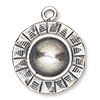 |
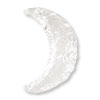 |
||
| Gold | Turquoise | Silver | Lapis Lazuli |
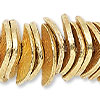 |
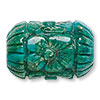 |
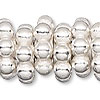 |
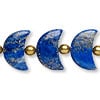 |
Polynesia
Originating with the Maori of New Zealand and embraced across the Pacific Islands, the Hei-Tiki—also known simply as Tiki—is a powerful symbol of fertility, strength and protection. Traditionally crafted from green stone, it helped establish a lasting cultural association between green-hued gemstones like jade and emerald with jewelry throughout the region.
Shark tooth jewelry has been worn for thousands of years as a symbol of strength and protection, believed to bring good luck to the wearer. Traditionally tied to native cultures, it has more recently become associated with surfing, embodying a spirit of adventure and rebellion, as well as the laid-back essence of beach life. Beyond fashion, shark tooth jewelry also represents a deep connection to and respect for the ocean, reflecting the reverence many cultures have for the sea and its creatures.
Australia
Australia’s Indigenous artists crafted jewelry using natural materials such as shark teeth, shells, stones and feathers, creating necklaces, bracelets and crowns that held cultural significance. With the gold rush, gold emerged as a powerful symbol of wealth and status among Aboriginal communities, influencing traditional adornment practices.
| Australia | Symbol | Meaning |
|---|---|---|
 |
Dolphin | Guidance, Protection, Interconnectedness |
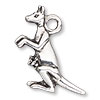 |
Kangaroo | Parenthood, Strength, Community |
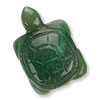 |
Turtle | Longevity |
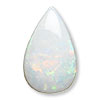 |
Opal | Fire, Water, the Divine |
To read more about Australian-inspired design, read “Australia’s Influence.”
Jewelry has always been more than mere adornment—it carries deep personal and cultural significance across time and traditions. Rings, universally recognized as symbols of love and commitment, mark marriages and enduring bonds. Amulets and talismans, from the evil eye to the Hamsa, offer protection, while religious symbols like crosses, Om and crescent moons serve as powerful expressions of faith and identity. The materials used—gold, diamonds and rare gemstones—have long signified wealth and status, reflecting both personal success and societal standing. Today, as cultures intertwine more than ever, jewelry design has transcended rigid traditions, embracing a fusion of global influences. This evolution allows for endless creativity, blending history with innovation to create pieces that are both deeply meaningful and refreshingly new.
To learn more, read “Cultural Symbols in Jewelry.”
Shop for Your Materials Here:
Have a question regarding this project? Email Customer Service.
Copyright Permissions
All works of authorship (articles, videos, tutorials and other creative works) are from the Fire Mountain Gems and Beads® Collection, and permission to copy is granted for non-commercial educational purposes only. All other reproduction requires written permission. For more information, please email copyrightpermission@firemtn.com.
**Please note that all metaphysical or healing properties listed are collected from various sources. This information is offered as a service and not meant to treat medical conditions. Fire Mountain Gems and Beads® does not guarantee the validity of any of these statements.
